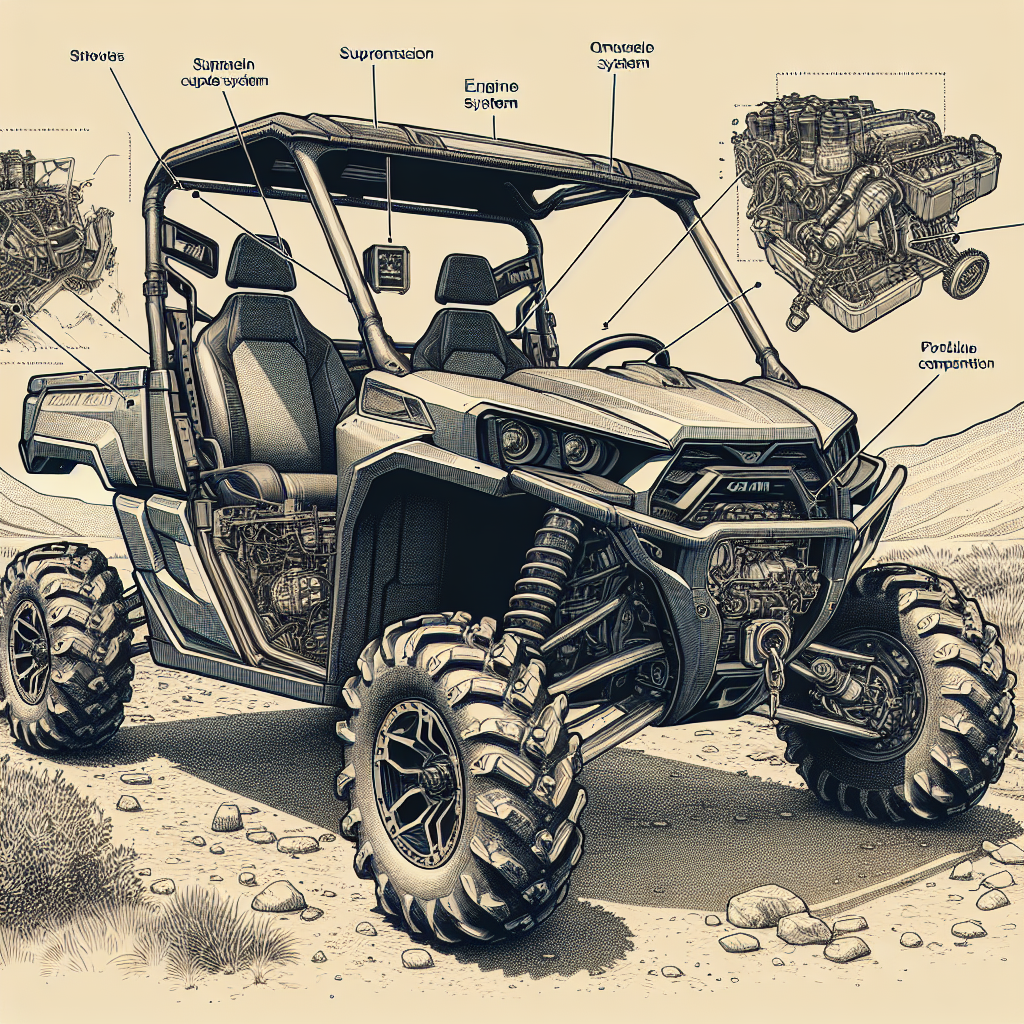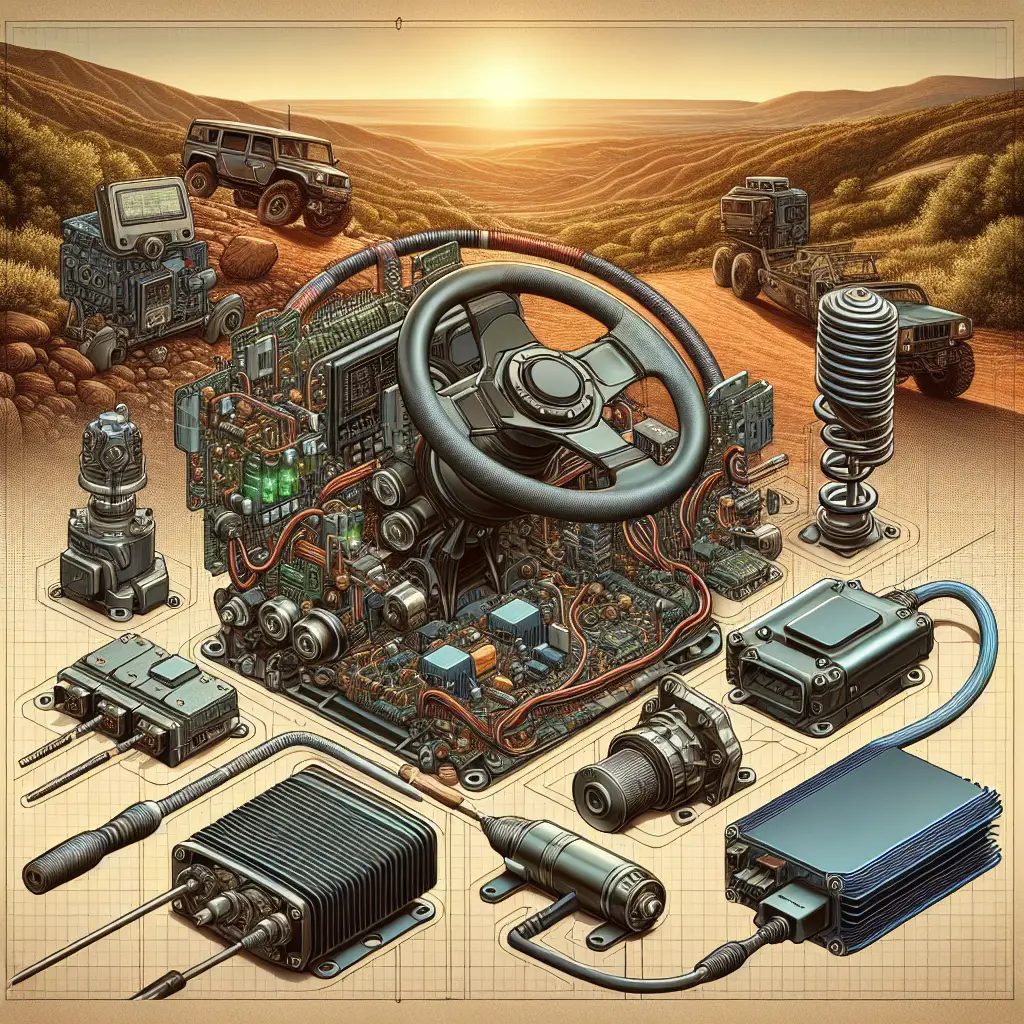The Honda Pioneer 520 is a utility vehicle recognized for its durability and dependability. It’s designed to handle a variety of tasks, whether on the farm, trail, or construction site. However, even the most reliable machines have their own set of challenges and the Pioneer 520 is no exception. Owners have reported issues that range from gear shifting difficulties to problems related to power loss, which can arise during acceleration and may be linked to several factors, such as air filter condition or oil levels.
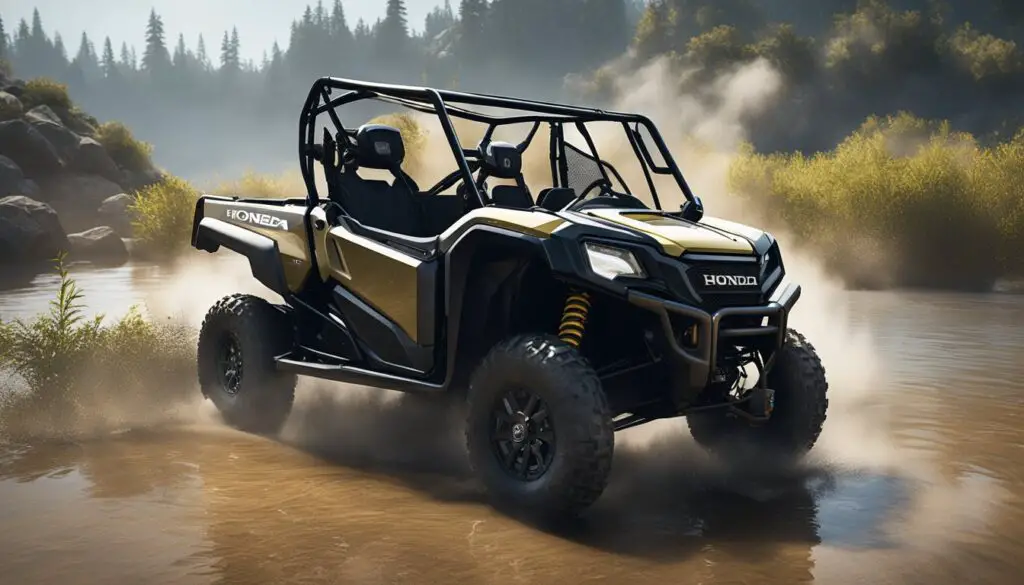
These issues can be further compounded by clutch overheating, a problem that is significant enough to impact the vehicle’s performance. The clutch is vital for torque transmission to the vehicle’s transmission. When overheated, it may lead to gear slipping or even complete failure.
Key Takeaways
- The Honda Pioneer 520 is a rugged and versatile utility vehicle known for reliability.
- Commonly reported issues include gear shifting troubles and power loss during acceleration.
- Clutch overheating is an important problem affecting the transmission system.
Overview of the Honda Pioneer 520
The Honda Pioneer 520 is a compact, versatile side-by-side that has gained popularity for its balance of efficiency and utility. In this section, you’ll find specific details about its general specifications and its design attributes that contribute to its flexibility.
General Specifications
- Engine: The heart of the Pioneer 520 is a 518cc liquid-cooled single-cylinder four-stroke engine providing ample power.
- Dimensions: It offers a snug footprint with an overall length of 106.3 inches, a width of 50 inches, and a height of 72.2 inches, making it compact enough to navigate narrow trails.
- Transmission: Comes with a five-speed automatic transmission with AT/MT modes and a manual mode for when you require more control.
- Towing Capacity: Capable of towing up to 1000 pounds, the Pioneer 520 is both strong and dependable when you need it to work hard.
- Payload Capacity: With a bed designed to hold up to 450 pounds, it supports your gear and supplies for various tasks.
Design and Versatility
- Cargo Bed: The 520 features a tilt bed measuring 38.7 inches wide, 28.7 inches long, and 9.9 inches in height, embodying Honda’s dedication to practical utility.
- Seating: Equipped with a bench seat designed for comfort and ease of ingress/egress, it ensures a pleasant ride even during extended use.
- Versatility: Whether you’re handling farm work, trail riding, or hunting, the Honda Pioneer 520’s design is tailored to adapt to both work and recreational activities seamlessly.
Transmission and Drivetrain
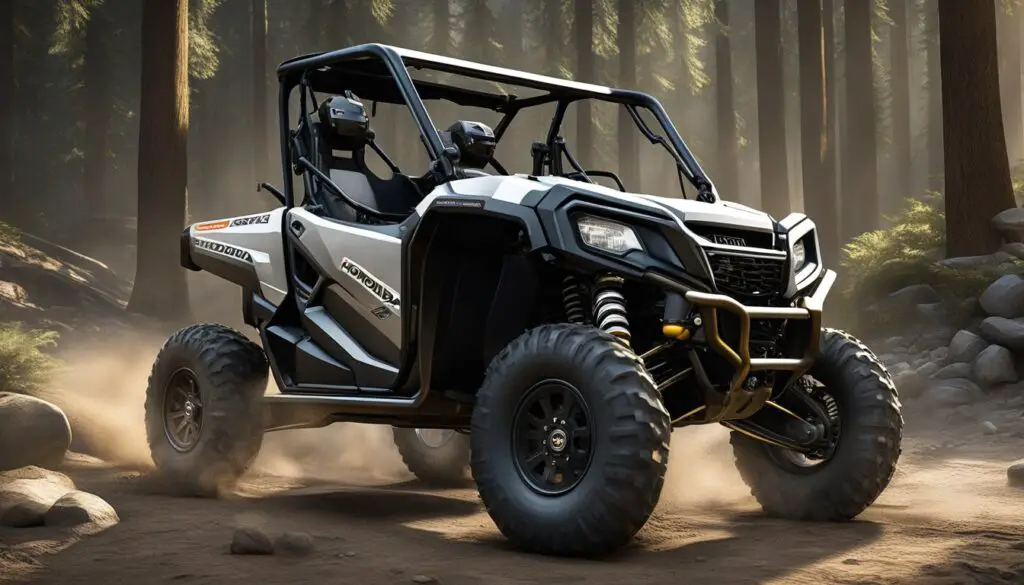
Your Honda Pioneer 520’s transmission and drivetrain are integral to its performance. You’ll want to be aware of transmission issues, the nuances between automatic and manual shifting, and the complexities of the differential and 4WD system.
Transmission Issues
The transmission is the heart of your Honda Pioneer 520, and when it experiences problems, it can seriously affect your ride. Harsh gear shifting and clutch overheating are common problems you may encounter. Difficulty shifting gears can be a telltale sign of an underlying issue, potentially with the automatic clutch system, that requires attention.
Automatic vs. Manual Shifting
Your Pioneer’s transmission can operate in both automatic and manual mode. While the automatic transmission allows for a worry-free ride, using the manual mode gives you more control, letting you decide when to shift for climbing hills or hauling loads. However, if shifting becomes challenging, it might indicate a problem with the geared transmission system.
Differential and 4WD System
With the open front differential and 4WD system, your off-road capabilities are enhanced. But, be mindful when using your 4WD capability. Issues in this system could manifest as unusual noises or a failure to engage properly, indicative of a differential problem. Regular maintenance and checks are crucial to ensure these systems are functioning correctly.
Engine and Performance
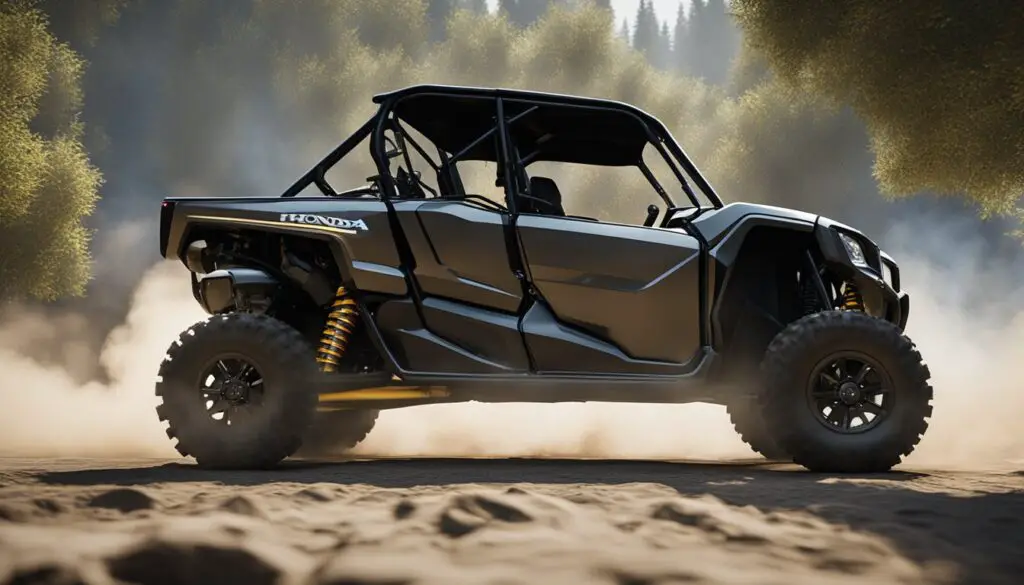
In this segment, you’ll learn about the Honda Pioneer 520’s engine capabilities, address performance issues you might encounter, and discuss the necessary maintenance to keep your ride smooth and powerful.
Performance Concerns
Several factors can influence the performance of your Honda Pioneer 520. Be mindful that a decrease in power or unexpected engine behavior could be symptoms indicating maintenance is required. Concerns often cited by vehicle owners include:
- Power Loss: Triggered by a dirty air filter, low oil levels, or a clogged catalytic converter.
- Ignition System Failures: Issues with spark plugs can lead to a decrease in engine efficiency and performance.
- Fuel Injector Problems: Blocked or faulty fuel injectors may result in inadequate fuel delivery to the engine, impeding performance.
Staying vigilant about these concerns will allow you to address minor problems before they escalate.
Engine Maintenance
To ensure your Honda Pioneer 520 continues to perform at its best, regular maintenance is essential. Here’s what you need to keep an eye on:
- Air Filter: Make sure it’s clean to avoid power loss issues.
- Oil Levels: Regularly check and replace the oil to ensure engine longevity.
- Spark Plugs: Replace them according to the service schedule to maintain engine efficiency.
- Fuel Injectors: Have them inspected and cleaned periodically to prevent blockages.
Follow the manufacturer’s maintenance schedule to keep your engine running optimally and to avert potential performance concerns.
an affect the UTV’s clearance, particularly when off-roading on more challenging terrains.
Electrical Systems and Features
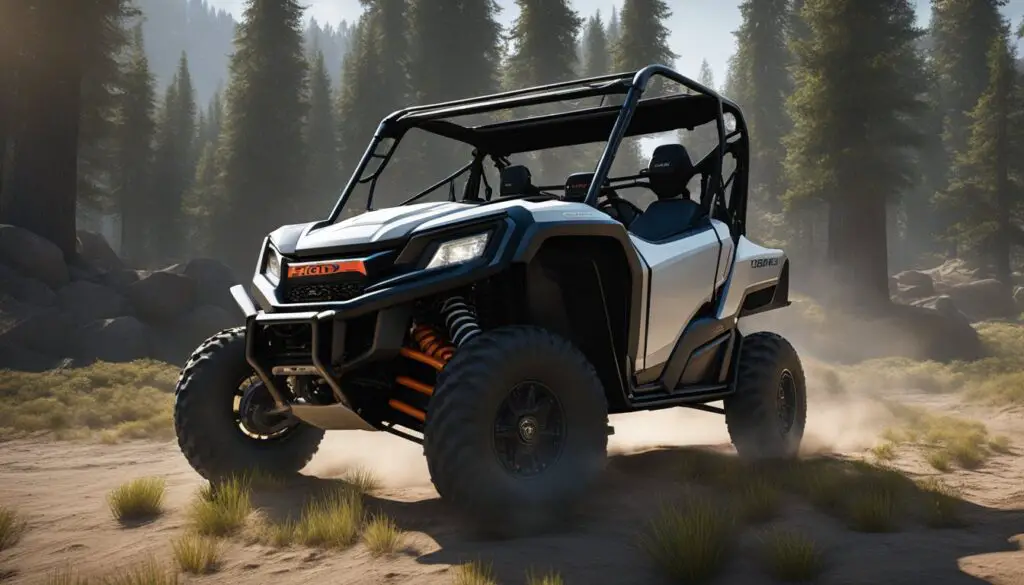
Troubleshooting your Honda Pioneer 520’s electrical system is crucial for maintaining optimal performance. This section helps you understand the electronic fuel system, addresses common electrical issues with effective solutions, and explores how aftermarket enhancements can upgrade your vehicle’s electrical capabilities.
Electronic Fuel System
Your Honda Pioneer 520’s electronic fuel system is a critical component that requires regular checks to ensure it’s functioning correctly. Proper maintenance includes:
- Inspecting and cleaning the fuel injectors to prevent clogging.
- Checking the fuel pump for operational issues.
- Ensuring the fuel filters are clear of debris.
Electrical Problems and Solutions
Electrical problems in your Pioneer 520 can range from minor annoyances to issues that prevent operation. Here’s what you should look out for:
- Dead Battery: Keeps your vehicle from starting; check the connections and health of your battery.
- Faulty Spark Plug Cables: Can lead to power loss and should be inspected for wear and proper connection.
For solutions:
- If experiencing power issues, consider examining the spark plug cables for signs of wear or damage and replace if needed.
- A low battery often indicates a charging issue; ensure your alternator and charger connections are functioning well.
Aftermarket Enhancements
Upgrading your Pioneer 520 with aftermarket parts can significantly improve its electrical system:
- Aftermarket Power Steering Kits: Enhance steering response and reduce steering effort.
- Quality aftermarket kits often include better wiring and electronic controls.
Remember, compatible upgrades will not only boost functionality but can increase your vehicle’s longevity.
Common Mechanical Issues
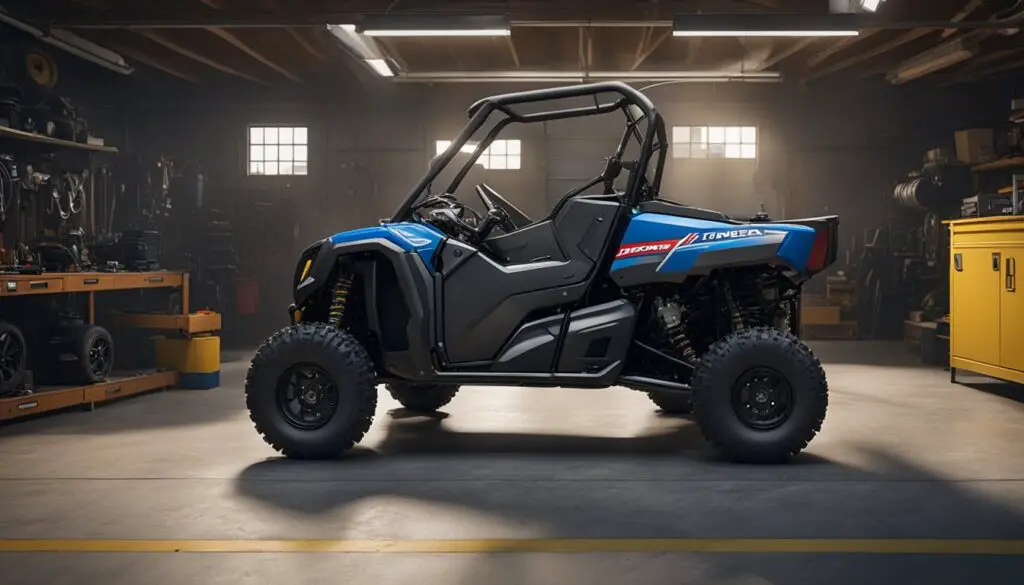
In maintaining your Honda Pioneer 520, you’ll want to pay special attention to key components that may present mechanical issues. Your clutch, transmission fluid, and air intake system are crucial to your vehicle’s performance.
Clutch and Gear Shifting Problems
Your clutch can face overheating, which can lead to gear slipping and power loss. This is often due to strenuous activity or heavy loads that exceed your UTV’s capabilities. It’s important to regularly check your clutch condition to prevent these issues.
- Signs of Clutch Issues:
- Difficulty changing gears
- Unusual noises during gear shifts
- A burning smell indicating clutch overheating
Transmission Fluid Concerns
Maintaining the transmission fluid at the proper level and condition is essential for smooth operation. Low transmission fluid levels can cause shifting problems and damage. Dirty transmission fluid or a clogged transmission filter can also lead to transmission hiccups.
- Transmission Fluid Maintenance:
- Check fluid levels regularly and top up if below the recommended mark.
- Inspect the fluid condition; it should be clear and not have a burnt smell.
- Replace the fluid and filter as recommended in your Pioneer 520’s service manual.
Air Filter and Intake Issues
A clean air filter ensures that your engine breathes efficiently. A dirty air filter or a clog in the air intake can cause a loss of power, particularly noticeable when accelerating.
- Air Intake Checklist:
- Inspect your air filter for dirt and debris.
- Clean or replace air filters as part of routine maintenance.
- Check the entire air intake for blockages or leaks that can hamper airflow.
Tires and Maintenance

Proper tire selection and regular maintenance are pivotal for your Honda Pioneer 520’s performance and longevity. Ensuring your tires are well-maintained and pressurized can significantly impact your ride’s quality and your vehicle’s overall health.
Tire Selection and Maintenance
When choosing tires for your Honda Pioneer 520, consider the terrain you frequently traverse. Whether it’s mud, sand, or rocky terrain, your tires should match your most common riding conditions to provide adequate traction and durability.
Regular maintenance checks are essential. Inspect your tires for signs of wear, such as:
- Deep cuts
- Excessive tread wear
- Embedded objects
Also, keep an eye on:
- Sidewall integrity
- Bead seating
Monitoring Tire Pressure
Maintaining the right tire pressure is crucial for your vehicle’s optimal performance and safety. It directly affects traction, fuel efficiency, and tire lifespan. Use a reliable tire pressure gauge to check the pressure at least once a month, or before any major off-road adventure. Here’s a simple guide to help you:
| Condition | Tire Pressure Check Frequency |
|---|---|
| Regular Use | Monthly |
| After Rough Trips | Immediately After the Trip |
| Seasonal Changes | With Every Significant Shift |
For the Honda Pioneer 520, the optimal tire pressure typically falls within a specific range indicated in your owner’s manual. Slight adjustments may be made based on load and terrain. If you notice a consistent drop in tire pressure, inspect your tires more closely for leaks or consider consulting a professional for a thorough assessment.
Load Handling and Towing
When you’re using your Honda Pioneer 520 for towing or carrying heavy loads, you expect durability and strength. Here’s what you need to know about the cargo bed and towing capabilities and how to manage heavier loads effectively.
Cargo Bed and Towing Features
Your Honda Pioneer 520 is equipped with a sturdy cargo bed designed to handle tough conditions. It’s important to note the following specs:
- Towing Capacity: Up to 1,000 lbs
- Cargo Bed Capacity: 450 lbs
When towing or hauling heavy loads, you might notice squeaking from the rear cargo bed. This noise can usually be attributed to the strain on the vehicle’s frame or the movement of cargo, and it’s a sign to check if everything is secure and not exceeding the recommended limits.
Handling Heavy Loads
When you’re loading your Honda Pioneer 520, it’s crucial to distribute weight evenly. Here are some tips to ensure you’re handling heavy loads safely:
- Balance Your Load: Place heavier items at the bottom and closer to the center of the vehicle to maintain stability.
- Check Load Security: Ensure that all items are secured with straps to prevent movement that could lead to imbalance or the aforementioned squeaking sound.
Remember, consistently carrying a heavy load or maxing out the towing capacity can put additional strain on your vehicle over time, so it’s important to give your vehicle a break and perform regular maintenance to keep it running smoothly.
Troubleshooting and Repair
When your Honda Pioneer 520 starts showing signs of problems, knowing how to identify these issues and perform basic repairs can save you time and money. This section will guide you through recognizing common problems and tackling simple fixes yourself.
Identifying Common Problems
Harsh Gear Shifting: If you’re experiencing rough transitions between gears, check the clutch and the transmission oil level. Make sure the oil is at the correct level and hasn’t deteriorated.
- Squeaking Cargo Bed: A squeaking noise from the rear during operation could indicate a need for lubrication or adjustment of the cargo bed mounts and hinges.
- Jolting Ride Off-Road: Inspect the suspension components for wear or damage if the ride feels unusually rough.
- Power Loss: Should you notice a loss of power, especially when accelerating, it could be due to a dirty air filter, low oil, or a clogged exhaust system, like the muffler or catalytic converter.
Use this table to quickly associate symptoms with potential causes:
| Symptom | Potential Cause |
|---|---|
| Rough shifting | Low transmission oil, worn clutch |
| Squeaky bed | Needs lubrication, mount adjustments |
| Jolting ride | Suspension wear, damage |
| Power loss | Dirty air filter, low oil, clogged exhaust |
DIY Repair and Adjustment
Fixing Gear Shifting Issues: Start by ensuring your transmission oil is filled to the recommended level and that you’re using the correct type. For clutch problems, adjustment or replacement may be necessary if it’s worn.
- Solving Squeaky Cargo Bed: Apply lubricant to the cargo bed’s moving parts. Adjust the bed mounts if the squeaking persists.
- Improving Ride Quality: Check the shock absorbers and struts for damage or leakage, and replace them if necessary. Consult your owner’s manual for guidance on any required adjustments.
- Restoring Lost Power: Replace the air filter if it’s dirty. Check your oil level, and top it up with the correct grade if it’s low. If the muffler or catalytic converter is clogged, a mechanic’s inspection is advisable.
Remember to consult your Honda Pioneer 520 owner’s manual for detailed maintenance and repair instructions, and always consider safety precautions before attempting any repairs.
Owner Experiences and Community Reports
When you’re looking into the Honda Pioneer 520, it’s smart to consider the experiences of those who already own and use the vehicle. Owner insights, found through forum discussions and customer feedback, can be invaluable in getting a real-world perspective.
Forum Discussions
On various online forums, owners share their experiences with the Honda Pioneer 520. You’ll find threads regarding specific issues like harsh gear shifting or clutch overheating. For instance, one post on the Honda Pioneer Forum discusses a 520 that dies when idling, with suggestions pointing toward a fouled spark plug or a dirty idle air control valve.
- Spark Plug Issues: Check forum guides on cleaning or replacing spark plugs.
- Idling Troubles: Search for threads about idle speed adjustments and air control maintenance.
Common topics also highlight squeaking from the rear cargo bed and jolts during off-road use, with many owners contributing their fixes or workarounds.
Customer Feedback
In customer feedback sections of sales platforms and review sites, you’ll find ratings and reviews of the Honda Pioneer 520. While most feedback tends to be positive, highlighting the vehicle’s reliability and versatility, a few customers raise concerns about transmission glitches and power steering problems.
- Transmission: Often involves harsh gear shifts, indicated by multiple reviews.
- Power Steering: Some users mention occasional deficiencies in reviews; check these posts for any pattern in feedback.
You can cross-reference details in reviews with the issues discussed in forums to get a fuller picture of potential concerns and remedies suggested by fellow users.
Conclusion
Encountering issues with your Honda Pioneer 520 can be frustrating, but it’s important to remember that many common problems have straightforward solutions. Your experience with this utility vehicle should remain positive, provided you address concerns promptly and properly.
Common Issues:
- Harsh Gear Shifting: Regular maintenance and proper use can prevent damage to the transmission.
- Squeaking from the Rear Cargo Bed: Apply lubrication to moving parts to minimize noise.
- Ride Jolting: Adjusting the suspension settings may help absorb off-road impact.
Preventive Measures:
- Maintain clean air filters to help prevent power loss.
- Monitor oil levels and clutch condition to avoid overheating.
Expert Advice:
- Consult a professional for any transmission or power steering issues.
- Regularly inspect your clutch and drive belts as part of your maintenance routine.
If you keep these tips in mind, your Pioneer 520 can continue to be a dependable companion on and off the roads. Remember to consult your owner’s manual or a professional mechanic for specific advice tailored to your vehicle’s needs. Enjoy your adventures with the confidence that your Honda Pioneer 520 is robust and ready to tackle the challenges ahead. Safe travels!
Frequently Asked Questions
In this section, you’ll find concise answers to some common questions that Honda Pioneer 520 owners may have about their vehicles.
What are common issues reported by Honda Pioneer 520 owners?
Your Honda Pioneer 520 is known for its durability, but some owners report issues such as harsh gear shifting, squeaky cargo beds, and occasional jolting rides on rough terrain. These issues are among the most frequently discussed in owner circles.
How does the Honda Pioneer 520 perform on rough trails?
The Honda Pioneer 520 is designed to handle rough trails with ease. However, some owners have observed a less than smooth ride when tackling very rugged off-road conditions.
Has Honda stopped producing the Pioneer 520 model?
As of the last update, Honda has not announced any discontinuation of the Pioneer 520 model. If you’re interested in the latest production status, it’s best to check with Honda directly or an authorized dealer.
What is the maximum speed achievable on a Honda Pioneer 520?
On average, the Honda Pioneer 520 can reach a top speed of roughly 40 miles per hour. This may slightly vary based on terrain, the weight of the load, and maintenance of the vehicle.
How does the Honda Pioneer 520 compare with the Kawasaki Mule in terms of reliability?
Both the Honda Pioneer 520 and the Kawasaki Mule are seen as reliable utility vehicles. Specific reliability can vary based on maintenance and use, but the Pioneer 520 generally holds a reputation for being a sturdy and dependable choice.
Why is my Honda Pioneer 520 shifting gears harshly?
Harsh gear shifting on your Pioneer 520 could be due to a few reasons, including a need for clutch adjustment or transmission issues. It’s recommended to have a professional examine it to diagnose and resolve this problem properly.

